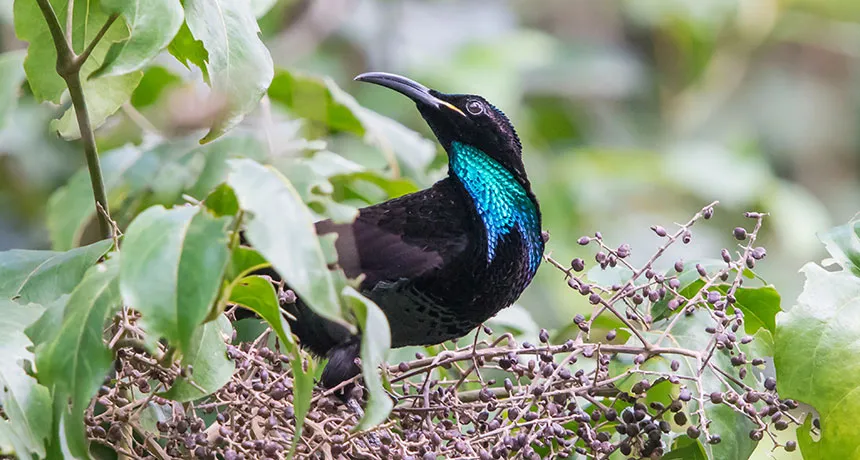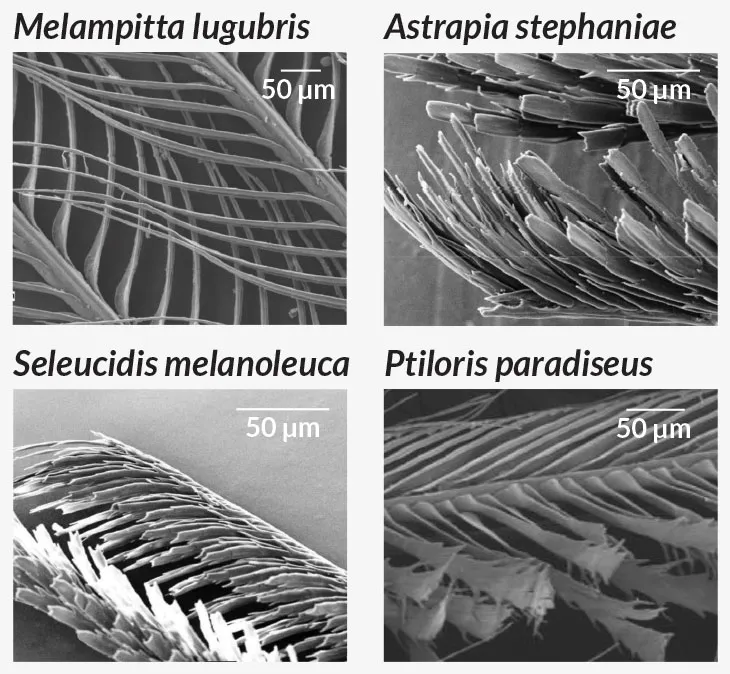Why some birds of paradise have ultrablack feathers
Tilt in spiky microstructures generates the birds’ exceedingly dark coloring

BIRDS OF A FEATHER The bird of paradise species Ptiloris paradiseus sports velvety, ultradark feathers next to its bright blue-green plumage. Microstructures in the black feathers, which help increase how much light is absorbed, are responsible for the extremely dark color.
B.G. Thomson/Science Source






